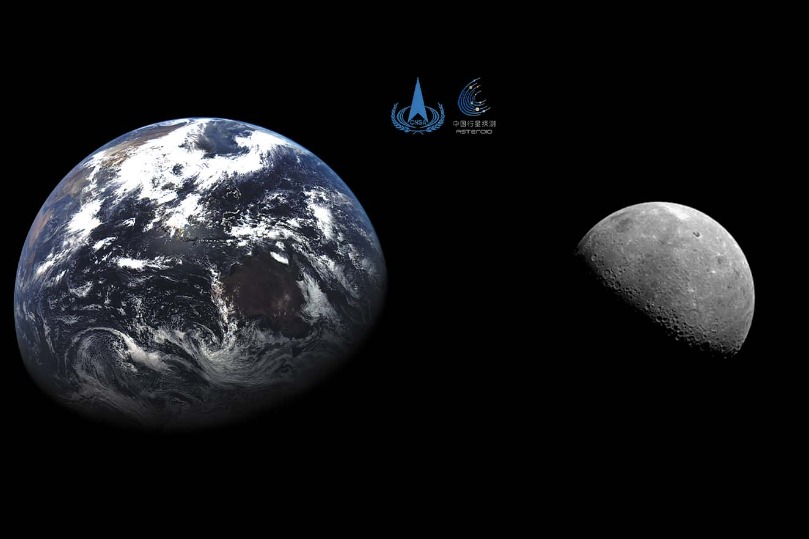Where art business meets art history

China's wealthiest are becoming increasingly aware of the country's artistic legacy
I have been collecting contemporary art for about 30 years, and I'm an early collector of important Western contemporary artists such as Jean-Michel Basquiat and Keith Haring, among others. My focus turned toward contemporary Chinese art around 2000, when I had the chance to visit China and see the extraordinary work being done by its artists.
The market for contemporary Chinese art was in the early stages in the United States, having seen earlier activity in the Netherlands, Italy, France and Switzerland. At that time there were few serious collectors of Chinese contemporary art, and I was lucky to immerse myself in the work during these so-called early years. Nowadays, the international art world is aware of the scene and its significance.
My collection of contemporary Chinese art includes many of the first generation of top-tier artists such as Zhang Xiaogang, Yue Minjun, Zeng Fanzhi and Wang Guangyi.
Over the last decade, the growth of China's middle class has had an impact on the growth of the Chinese art market. However, I would say that China's wealthiest citizens are becoming more aware of the importance of China's artistic legacy. They have focused their investment on the staying power of art, which in turn has led to an increase in their desire to buy art.
China has seen a sharp increase in auction houses to cater to this class of wealthier citizens, as well as increased international demand for good works of contemporary Chinese art.
The market has matured notably in a short time. China is developing into a stronger nation, and contemporary Chinese art has followed suit. There are still enormous opportunities for collectors to find great works at reasonable prices.
Chinese photography, especially historical photography from the 1990s, remains among the most affordable areas. It is still undervalued relative to painting, which was the focus of collectors for many years. Quality works will become increasingly scarce, particularly as China develops as a consumer society with its own collector base. The Chinese audience with disposable income is growing, and a consistent percentage of those people will become art advocates and collectors. Although contemporary Chinese paintings are still the most desirable, they are expensive for the average collector.
The key historical works of Chinese photography from the 1990s are still the best investment. As for the artists, more time is needed to determine which artists from the newer generation will emerge as leaders of their era.
Historical contemporary Chinese photography is one of the most accessible and interesting areas of the contemporary Chinese art market and is worth collecting for its significance within the chronology of the development of this field.
One must be careful about how to value and collect the newer Chinese artists, however. One has to be aware of the hype and the marketing that attempts to create an illusion of value and importance, which is different than the core, first generation of contemporary Chinese artists who became a part of art history.
Many people in the world have a basic understanding of China's glorious artistic culture and heritage. In recent years, savvy collectors, curators, museum professionals and auction houses have become more knowledgeable about contemporary Chinese artists and their work. There is considerable understanding of China's artists in the West. However, I think people are less knowledgeable about China's domestic art market and auction house system, since this has only been established in the past 15 years or so.
International news and media sources are keen to report on China's economic situation, and the collectors and auction houses that are starting to both make the market and participate in it. People are always fascinated by the billionaire culture, no matter which country we are talking about. In China, however, intrigue concerning billionaires has a lot do with the socio-political climate and how wealthy Chinese have made their money in a relatively short of time.
China has transformed economically over the past 35 years, and a select group has risen to the top of the economic ladder, inspiring millions of people to reconsider their own destiny within the evolving society. Chinese billionaires will most definitely influence global art markets by their choices in art and luxury spending.
It is only a matter of time before prices for leading contemporary Chinese artists reach the heights of that of their Western counterparts; in some cases they already have. Important contemporary Chinese art is still undervalued and an opportunity for collectors from any part of the world.
Beijing is on a par with other successful, cosmopolitan cities. It is a compelling destination for many reasons, especially its maturing art scene and expanding museum culture. There are a lot of positive changes taking place in Beijing.
The art business is just that: The buying and selling of unique artworks. Art history, on the other hand, is the story and legacy of a culture that cannot be imitated. In this regard contemporary Chinese art exhibits a powerful and compelling narrative as it reflects China's extraordinary cultural traditions and evolving society.
Where China goes, the world will go, and her artists will capture those momentous changes every step of the way.
The author is a New York art collector and the founder of AW Asia and Jing Daily. The views do not necessarily reflect those of China Daily.
(China Daily European Weekly 09/25/2015 page9)
Today's Top News
- Consumption set to continue robust growth
- Li's visit to Rio to strengthen BRICS links
- Indian pilgrimages to Xizang resume after hiatus
- Lai's shameless display of hubris at cost of well-being of island's residents
- End of USAID doesn't end overt weaponizing of US aid
- Xi urges youth, students' federations to deepen reform, innovation for new achievements






























